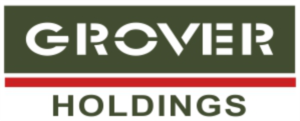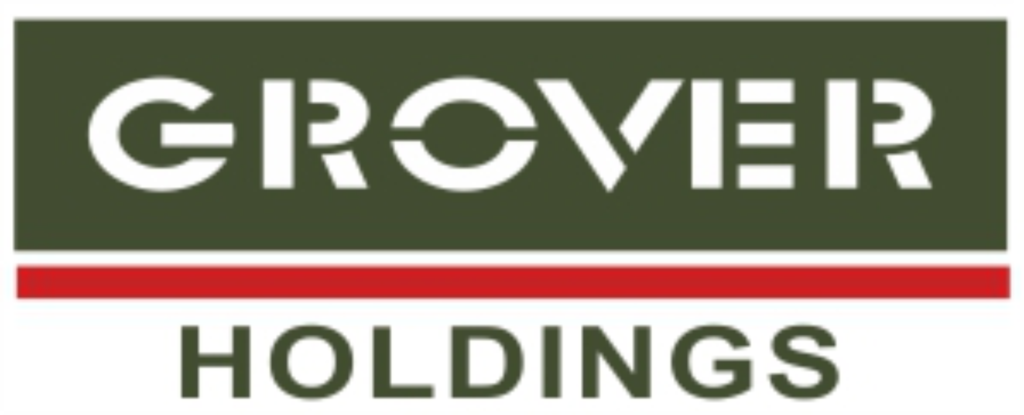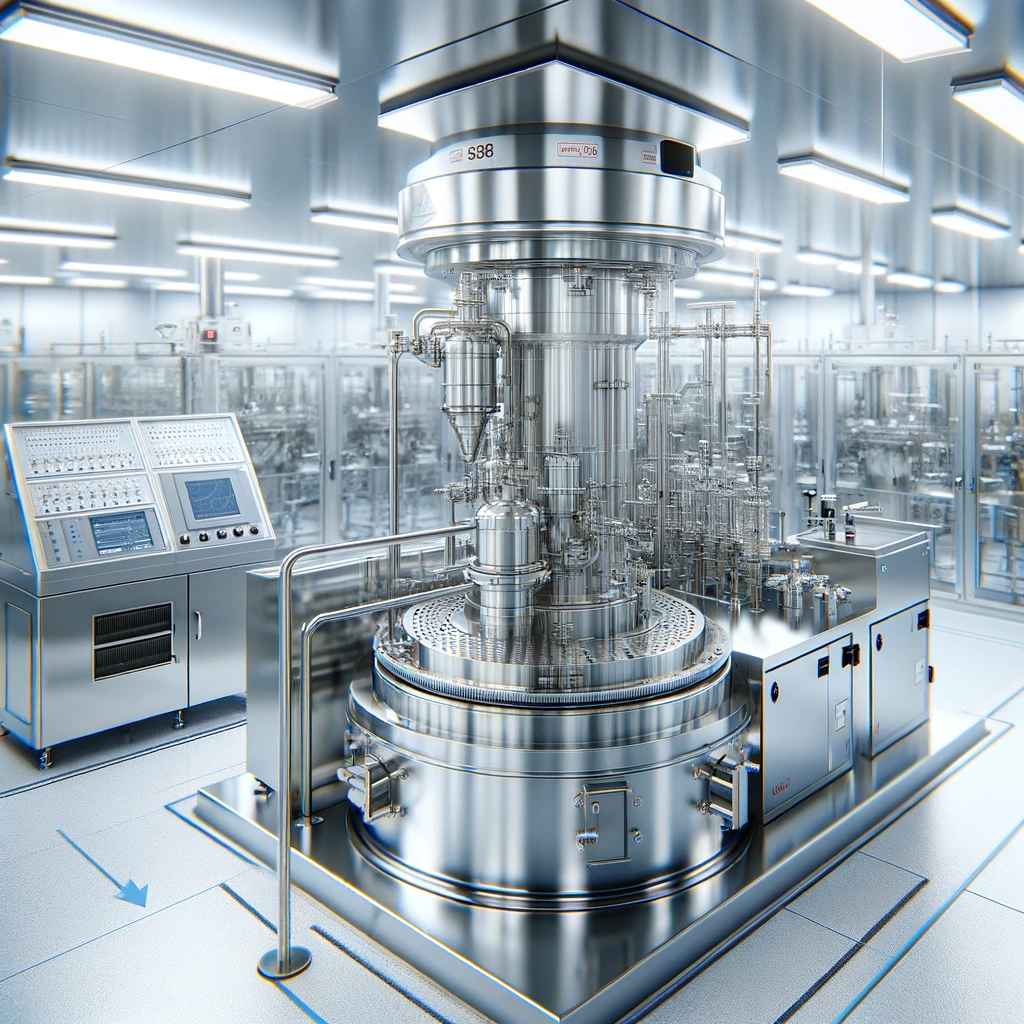
Image credit: DALL.E
Clean Rooms play a pivotal role in maintaining product integrity and ensuring compliance with stringent pharma regulatory standards.
However, these controlled environments are constantly threatened by an insidious foe: corrosion. This silent destroyer can compromise equipment, contaminate products, and lead to expensive product recalls, downtime and frequent repairs.
Let’s understand everything there is to corrosion in Clean Rooms and the mitigation measures to combat this perennial issue.
Understanding Corrosion in Pharmaceutical Clean Rooms
In the highly controlled environments of Clean Rooms, corrosion manifests in various insidious forms. Some common examples are mentioned here:
1. Chemical Corrosion
This is perhaps the most common type of corrosion that arises from consistent exposure to aggressive disinfectants that are used to maintain the Clean Room’s sterile conditions.
These disinfectants leave behind residues on metal surfaces, leading to gradual degradation.
2. Environmental Corrosion
Inadvertent environmental factors such as fluctuating temperatures and humidity levels are another leading cause of corrosion in Clean Rooms.
Temperature changes often lead to condensation on metal surfaces, providing a conducive environment for electrochemical reactions. High humidity levels increase the amount of moisture in the air, which can settle on equipment and surfaces, fostering corrosion.
Given the critical nature of pharmaceutical production, understanding and mitigating these various forms of corrosion is paramount.
Materials Used in Clean Rooms and their Susceptibility to Corrosion
Due to their inherent cleanliness, robust durability, and ability to resist contamination, stainless steel, aluminium, and various types of plastics are some of the common materials used in Clean Rooms around the world.
However, since not all materials exhibit the same level of corrosion resistance, a nuanced understanding is needed of the properties and behaviours of these materials in different environmental conditions.
Take for example, stainless steel. Despite its general resilience to a wide range of chemicals, stainless steel can be prone to corrosion in the presence of certain substances, particularly chlorides. This type of corrosion, often referred to as pitting or crevice corrosion, can occur in environments where chlorides are commonly present in the form of cleaning agents or process chemicals.
Similarly, aluminium is commonly used in Clean Rooms due to its light weight and general corrosion resistance, especially in dry environments. However, aluminium’s resistance significantly diminishes in conditions of high humidity or in the presence of certain chemicals. In such environments, aluminium can face corrosion, which may manifest as pitting, intergranular, or galvanic corrosion, depending on the specific circumstances.
Understanding the specific properties and limitations of these materials is crucial for minimising the risks of corrosion in Clean Rooms. Careful consideration of environmental factors, such as humidity levels and chemical exposure, is equally essential in protecting these materials from corrosion, ultimately contributing to the longevity and safety of Clean Room operations.
Innovative Solutions in Combating Corrosion
The industry is witnessing exciting developments in corrosion remediation and prevention technologies. Two such innovations that are getting increasingly popular are Sahara Buffing Pads and Grit ScrubPADS.
1. Sahara Buffing Pads
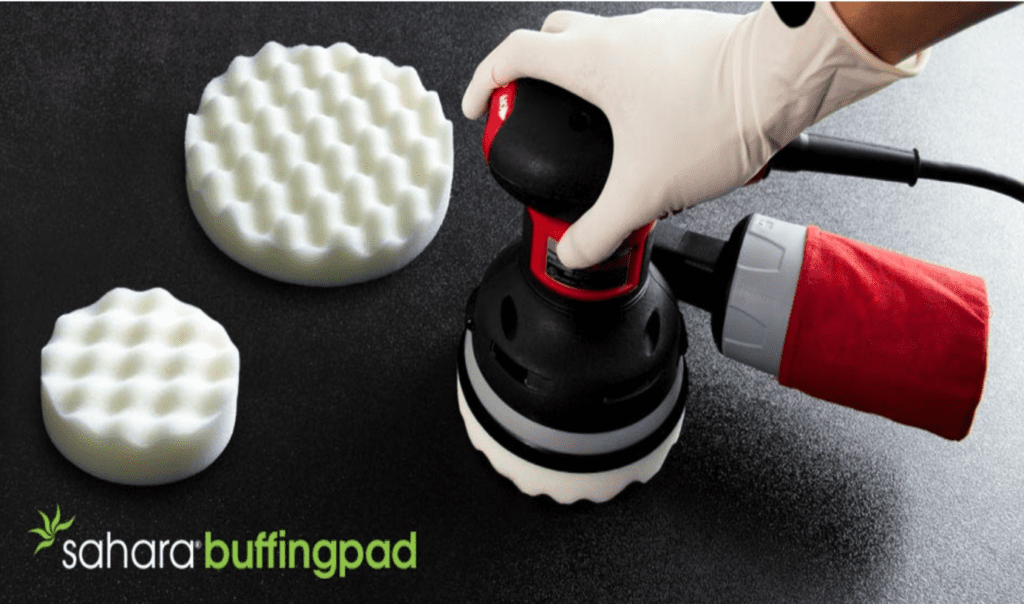
The Sahara Buffing Pad is a specially designed cross-linked ester, polyurethane foam that is ideal for dislodging stubbornly adhered surface residues from a variety of Clean Room surfaces, including large glass, plastic, ceramic, stainless steel, aluminium, and electropolished surfaces.
One of the key features of these buffing pads is their compatibility with orbital, or pneumatic power tools, which enables mechanical force for fast and efficient cleaning using only deionized (DI) water or simple 70% IPA
Another advantage is the Sahara Buffing Pad’s ability to dislodge heavy disinfectant residues and other process chemical and solvent deposits/stains but without scratching the surfaces it is used on. This is particularly crucial in GMP facilities where maintaining stainless steel equipment in pristine conditions is essential.
Finally, the Sahara Buffing Pad’s soft construction (thanks to its unique polymer cross-linking), provides outstanding tear and abrasion resistance which ensures excellent particle control characteristics – a critical factor in maintaining the stringent cleanliness requirements of Clean Rooms.
2. Grit ScrubPADS
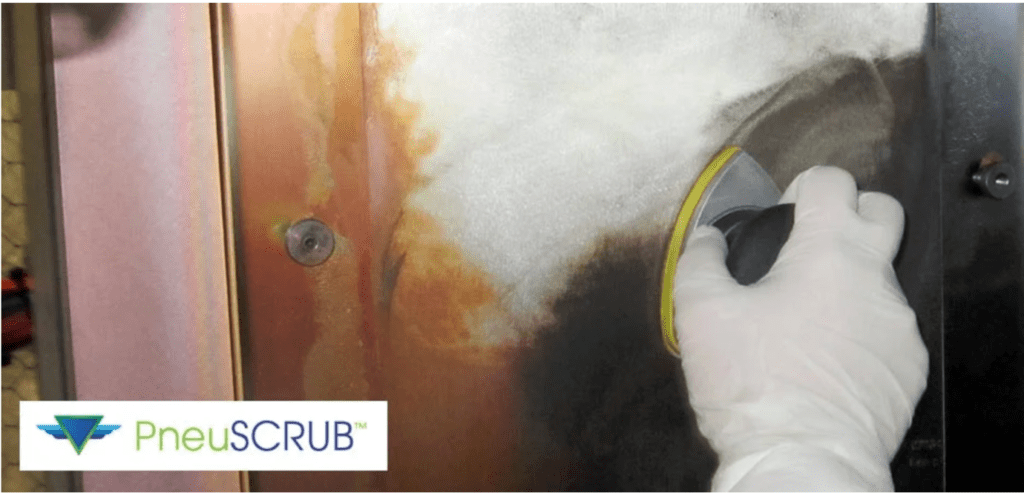
Working hand-in-hand with the Sahara Buffing Pads are the Diamond Grit ScrubPADS. Deploying these is the next step after the surface deposits have been dislodged, entrapped, and removed using the Sahara Buffing Pads and other accessory tools thus exposing the true nature of the surface underneath. These are used to remediate surfaces with rouging, pitting, rusting, discolouration, etc. using an appropriate grit starting from 140 grit to 1350 grit thus still maintaining a smooth surface finish.
Designed as a hook and loop attachment system, the 140 to 1350 Grit ScrubPADS can be quickly attached to pneumatically or electrically powered orbital sanding tools such as the PneuSCRUB or an electrical Orbital Sander that help technicians clean large surface areas with reduced ergonomic strain.
Summing Up
Corrosion in pharmaceutical Clean Rooms is a complex challenge that requires a multifaceted approach.
By understanding the causes and effects of corrosion, and adopting new-age solutions like Sahara Buffing Pads and Grit ScrubPADS, pharma organisations can effectively combat the issue of corrosion in Clean Rooms. To see these solutions in action, here’s our quick demo at the recently held CPHI & PMEC India 2023. Feel free to write to us at vivek@groverholdings.com for more information.
Credits:
Foamtec International, Wilshire Contamination Control Division
Alsico Iberia S.L., Spain (formerly known as Vestilab CRC S.L.)
